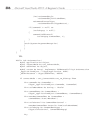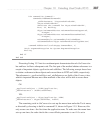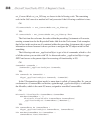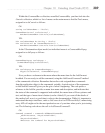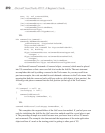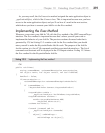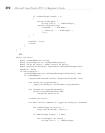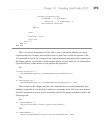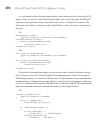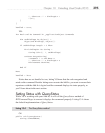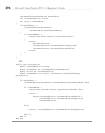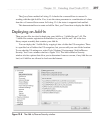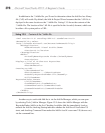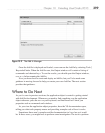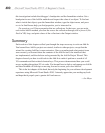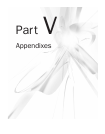
394 Microsoft Visual Studio 2010: A Beginner’s Guide
As you learned earlier, the application object is the starting point for accessing all VS
objects. Since we need to write to the Output window, the code accesses the ToolWindows
property of the application object, which provides access to multiple VS windows. The
following code obtains a reference to the OutputWindow, adds a new pane, and activates
the pane:
C#:
OutputWindow outWin =
_applicationObject.ToolWindows.OutputWindow;
OutputWindowPane outPane =
outWin.OutputWindowPanes.Add(
"Keyboard Shortcuts");
outPane.Activate();
VB:
Dim outWin As OutputWindow =
_applicationObject.ToolWindows.OutputWindow
Dim outPane As OutputWindowPane =
outWin.OutputWindowPanes.Add(
"Keyboard Shortcuts")
outPane.Activate()
Going back to the application object, we need to access the Commands collection, using a
foreach loop to access each Command object. Each command name is in the Name property.
The Bindings property is a collection of shortcut keys for the command. Some commands have
no shortcut keys, as indicated by an empty Bindings collection (its Length property will be set
to 0), so we skip them. The following code shows how to iterate through all VS commands and
print each command name and associated shortcut keys to the Output window:
C#:
foreach (Command cmd in
_applicationObject.Commands)
{
object[] cmdBindings =
cmd.Bindings as object[];
if (cmdBindings.Length > 0)
{
string bindingStr =
string.Join(", ", cmdBindings);
outPane.OutputString(
"Command: " + cmd.Name +



